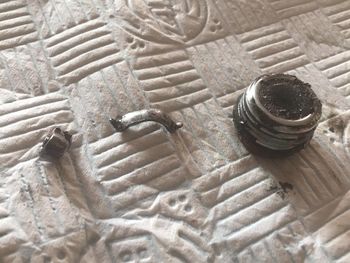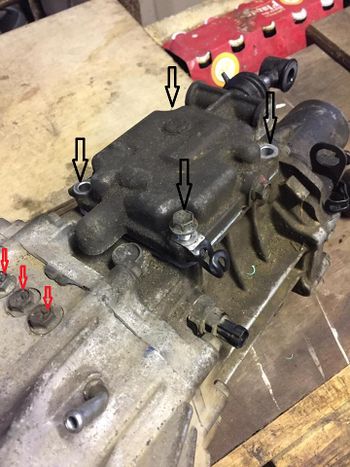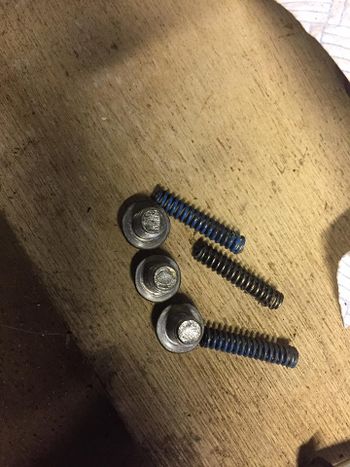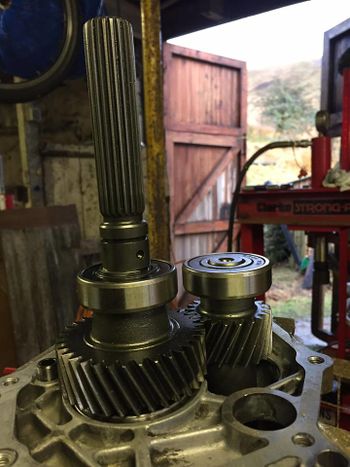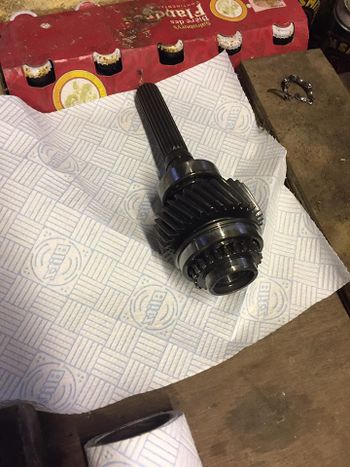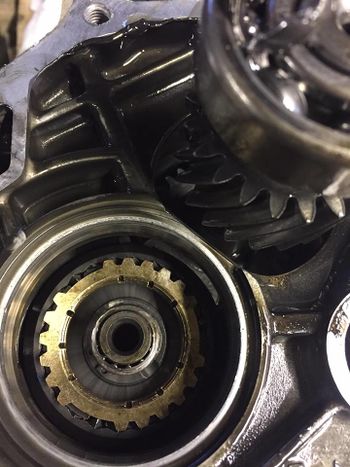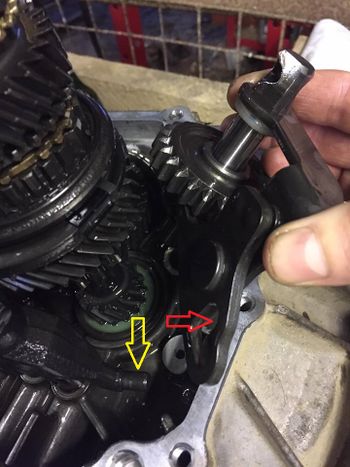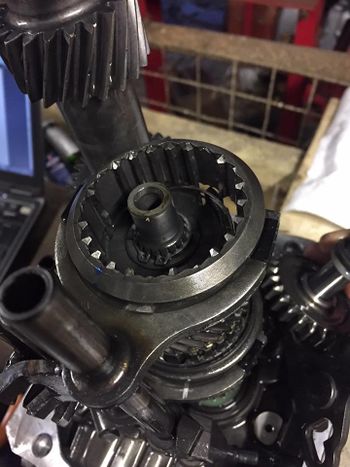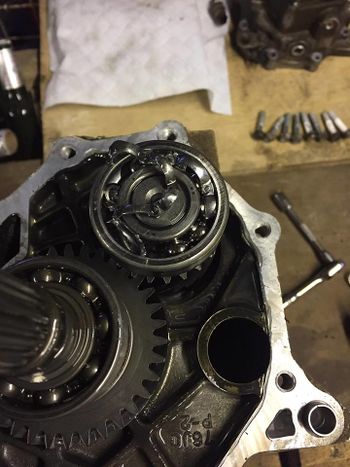Difference between revisions of "Gearbox R72 rebuild"
| Line 62: | Line 62: | ||
<br clear=all> | <br clear=all> | ||
[[File:Gb7a.jpg|thumb|left|350px|Reverse lever]] | [[File:Gb7a.jpg|thumb|left|350px|Reverse lever]] | ||
| + | <br clear=all> | ||
| + | |||
| + | Below is a sad syncho sleeve with syncho keys no where to be seen. Don't let the sleeve lift as much as this. You have been warned, etc. | ||
| + | |||
| + | <br clear=all> | ||
| + | [[File:Gb9.jpg|thumb|left|350px|Reverse lever]] | ||
<br clear=all> | <br clear=all> | ||
Revision as of 16:52, 18 January 2017
Contents
A guide to rebuilding an R72 gearbox
Introduction
The R72 gearbox is was fitted from about 2005. The case splits vertically into three parts. The earlier box splits horizontally.
Bearing failure seems fairly common on these boxes. Many of these were fitted with faulty prop-shafts that allowed oil to leak through the centre cap of the prop, and perhaps oil starvation early in their life contributes to failures. All of the deep groove open bearings on the original box are replaced with metal shielded units in Suzuki's parts which implies there may be a general issue in splashing enough oil around.
Rebuild
Tools
- Standard metric sockets and spanners
- Range of impact sockets used to press in bearings
- 2 large flat head screw drivers
- a 2 leg gear puller and/or hydraulic press
- bearing seperator
- torque wrench(s) to cover 23-90Nm
- copper or plastic mallet
- sturdy metal tube of approx 25mm internal diameter, at least 130mm long; but see text for alternatives
Ideally you'll want a copy of the correct service manual. This gearbox is covered under supplementary service manual 99501-81A010-01E. You might get lucky with Google!
Gearbox Removal
Is covered elsewhere (need to link). When draining the gearbox oil a furry drain plug and chunks of metal are a good sign something has gone wrong in there.
Dismantling
With the gearbox on your workbench, remove the 4 bolts (black arrows in below picture) holding on the gear change cover and remove. It's sealed with liquid gasket and may need a tap with a soft hammer.
Remove gear shift locating bolts (red arrows in above picture), springs and ball bearings (not shown). There is also a bolt on the opposite side of the case for the reverse gear shaft you need to remove with its spring and bearing.
The bearings can stick in the shafts. If you can't them out at this stage losely refit a bolt in the corresponding hole without the spring so you don't lose the bearing when you start to remove the gear shafts.
Needs something here about rear case removal
With the rear case off you can now see the long output shaft, and the short counter shaft. The below picture was taken on reassembly with a new sealed bearing on the counter shaft. From the factory this was an open bearing on my 2009 model.
The output shaft lifts away easily. Do this slowly and make sure nothing lose is stuck to the bottom of this ready to fall on the floor.
Looking down on to what is the input shaft, you should be left with the a synchroniser ring (brass colour), under this is a round, lose clip, and in the centre a needle roller bearing. It's worth lifting these out now and keeping safely, in the correct order with your output shaft. They'll only fall out and disappear later when you pull out the input shaft.
Something about removing the mid case here.
Remove the reverse gear. Be careful here, the lever plate (red arrow), connects to one of the shift rods (yellow arrow). If you lift the shift rod it will probably pop off a synchro sleeve on the input shaft, and syncho keys will fall on the floor, and you will be sad.
Below is a sad syncho sleeve with syncho keys no where to be seen. Don't let the sleeve lift as much as this. You have been warned, etc.
This is the top of the counter shaft. Fairly obvious what is wrong here.
Torque Settings
Full details of the torque settings can be found in the reference data
Page last edited on 18/01/2017 by user Sheepish
